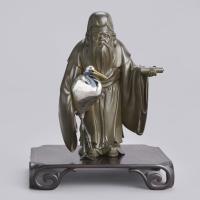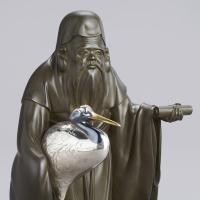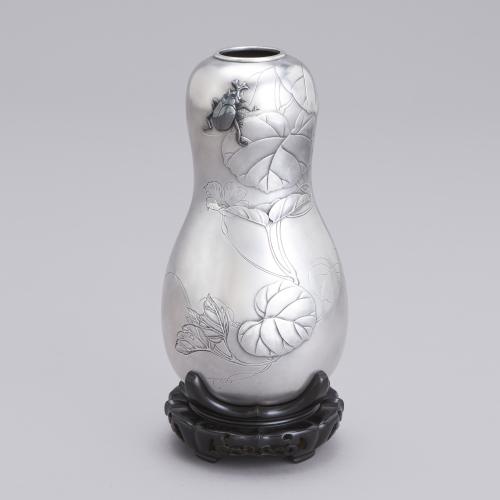
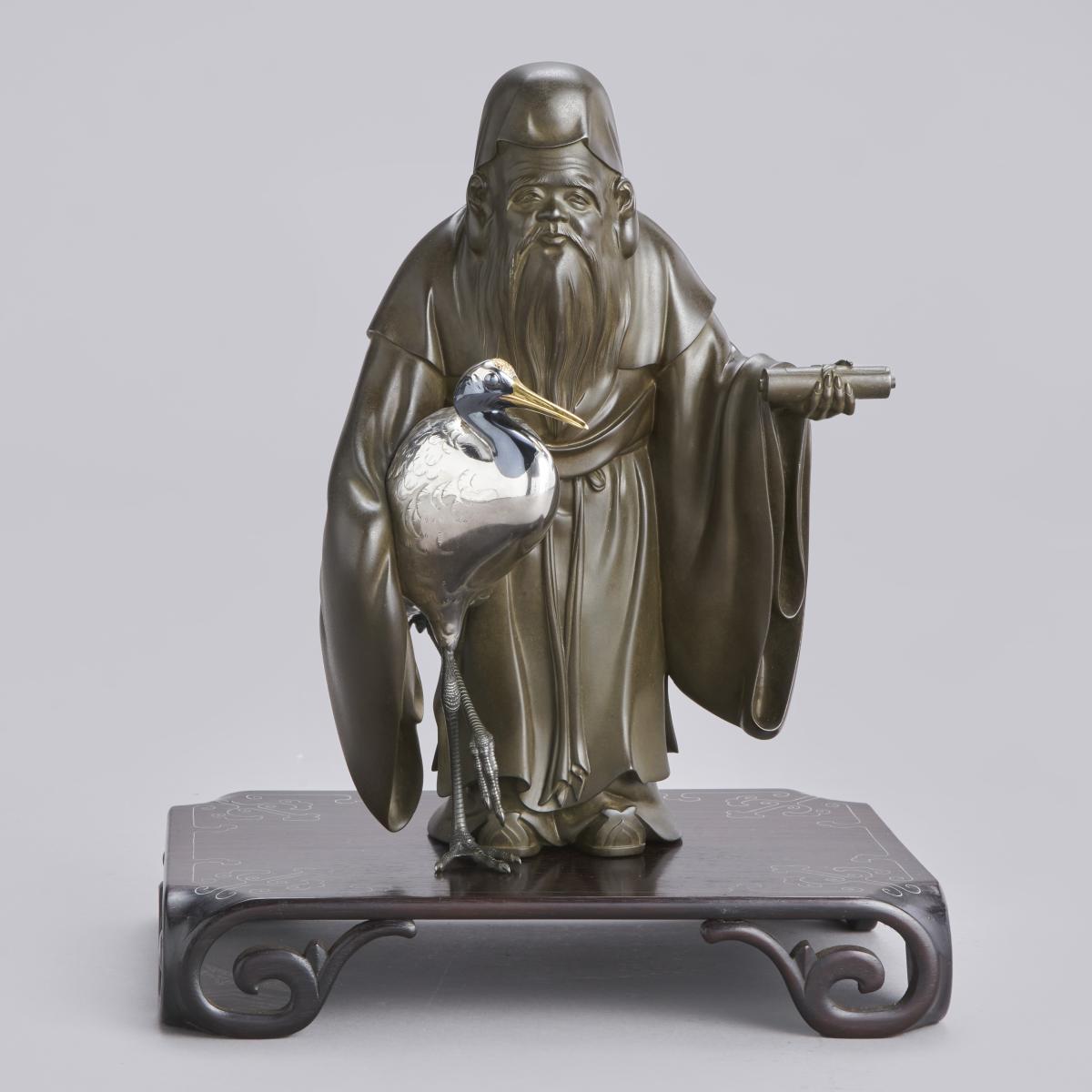
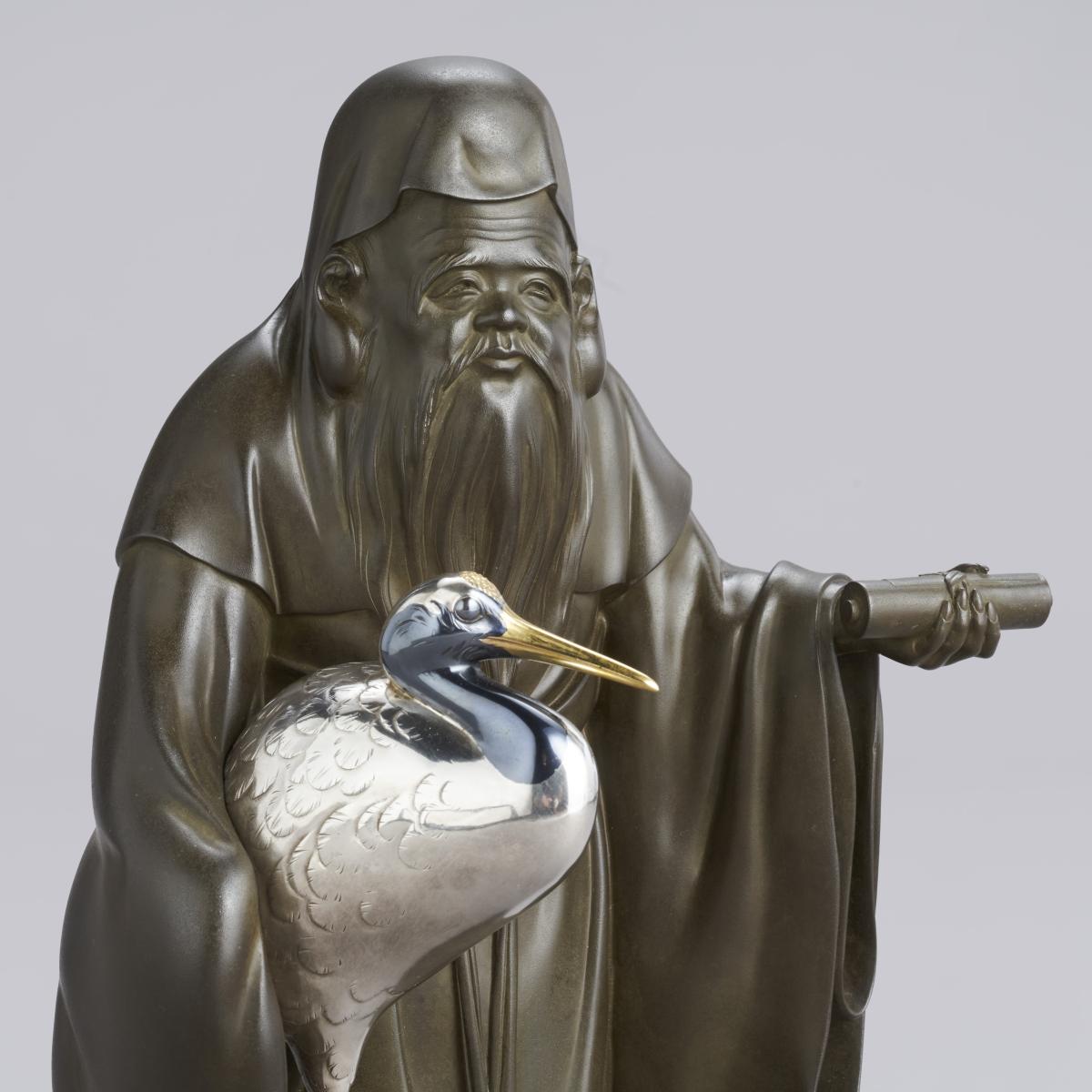
This object is eligible for a Certificate of BADA Provenance
The BADA Standard
- Since 1918, BADA has been the leading association for the antiques and fine art trade
- Members are elected for their knowledge, integrity and quality of stock
- Our clients are protected by BADA’s code of conduct
- Our dealers’ membership is reviewed and renewed annually
- Bada.org is a non-profit site: clients deal directly with members and they pay no hidden fees
Japanese bronze of Jurojin God of longevity and one of the Seven Gods of good fortune, with a silver and shakudo crane signed in a rectangular reserve Seiun 晴雲 on a wood base with silver wire decorations, late Meiji Period.
The tomobako wood storage box bearing inscription:
Juro okimono, Hakkeido (Okimono of God Jurojin, Hakkeido) 壽老置物, 八景堂.
Label on the reverse lid: Kyobashiku Yazaemon-machi nibanchi, kikinzoku bijutsuhin, seisaku hanbai, Miyamoto Shoko, Miyamoto Shop, Ginza, Tokyo
京橋區 弥左衛門町二番地, 貴金属美術品 製作販賣, 宮本商行 (retailed by Miyamoto Shop, Yazaemon-machi 2-banchi, Ginza district, Tokyo).
Kano Seiun I (art name Kano Ginzaburo) was born in 1871 and studied metalworking under the famous artist Oshima Joun.
He exhibited a bronze figures of sparrows at the Paris Exposition in 1900 and also exhibited at the 1914 Exhibition in Tokyo. One of his works is in the collection of the Tokyo National Museum.
Reference: 'Splendors of Imperial Japan, Arts of the Meiji Period from the Khalili Collection' by J. Earle pg. 378 no. 271.
Dimensions
H 29cm x W 24cm x D 7.5cmThe BADA Standard
- Since 1918, BADA has been the leading association for the antiques and fine art trade
- Members are elected for their knowledge, integrity and quality of stock
- Our clients are protected by BADA’s code of conduct
- Our dealers’ membership is reviewed and renewed annually
- Bada.org is a non-profit site: clients deal directly with members and they pay no hidden fees


